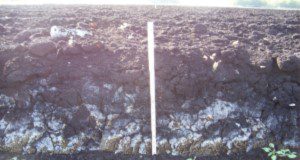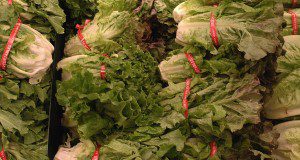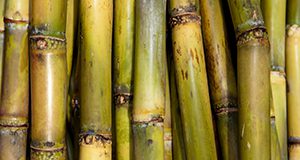Fusarium wilt of lettuce is a disease caused by the fungus Fusarium oxysporum f.sp. lactucae. The disease is present in all lettuce production areas worldwide. Recently this disease has been identified in Florida in localized fields. This new 4-page publication of the UF/IFAS Horticultural Sciences Department presents information about the disease, symptoms, and control measures useful to lettuce growers in Florida. Following these recommendations may help to avoid the spread of this fungus in muck soils at the Everglades Agricultural Area (EAA), where 90% of the lettuce in Florida is planted. Written by Germán V. Sandoya, Jesse J. Murray, Richard N. Raid, and Christian F. Miller.
https://edis.ifas.ufl.edu/hs1385
Tag: Everglades Agricultural Area
Everglades Agricultural Area Soil Subsidence and Sustainability
This 4-page major revision, a publication of the UF/IFAS Department of Soil and Water Sciences, highlights the current status of Histosols within the Everglades Agricultural Area in southern Florida. Over the last century, soils within the region have gradually been lost via oxidation, a process commonly referred to as soil subsidence. The rate of subsidence is gradually declining, due to factors such as increased mineral content in soil, humification, and water management (maintenance of higher water tables). Best Management Practices and crop rotation help slow down the rate of oxidation and promote soil sustainability within the region. Written by Jehangir H. Bhadha, Alan L. Wright, and George H. Snyder.
https://edis.ifas.ufl.edu/ss523
Lettuce Cultivars Suitable for Use on Organic Soils in Southern Florida
Lettuce as a commercial crop is planted mainly in organic soils (“muck”) in the Everglades Agricultural Area (EAA) in south Florida. This updated 6-page publication of the UF/IFAS Horticultural Sciences Department presents a summary of previous cultivar releases by UF/IFAS as well as a description of cultivars currently planted in the EAA. Written by German Sandoya and Huangjun Lu.
https://edis.ifas.ufl.edu/hs1225
Elemental Sulfur Recommendations for Sugarcane on Florida Organic Soils
Micronutrient deficiencies can be important limiting factors in alkaline soils, with most micronutrients becoming less available for plant uptake as soil pH increases. This 6-page document is intended primarily for Florida sugarcane growers but may also be useful to researchers and others interested in sugarcane nutrition. It presents revised elemental sulfur recommendations for sugarcane grown on Florida organic soils along with supporting information. Written by J. Mabry McCray, and published by the UF/IFAS Agronomy Department, February 2019.
http://edis.ifas.ufl.edu/ag429
Weed Management in Rice
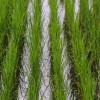 Successful weed control is essential for economical rice production in the Everglades Agricultural Area. Weeds reduce rice yields by competing for moisture, nutrients, and light during the growing season. Weed infestations can also interfere with combine operation at harvest and can significantly increase harvesting and drying costs. Weed seed contamination of rice grain lowers grain quality and may lower the cash value of the crop. As with any biological system, an effective weed management program must consider many factors that vary from crop to crop and year to year. The most important of these factors include planting date, climatic conditions, seedbed preparation, seed quality, stand establishment, and water management. This 5-page fact sheet was written by D.C. Odero and C. Rainbolt, and published by the UF Department of Agronomy, October 2014. (Photo: C. Odero, UF/IFAS)
Successful weed control is essential for economical rice production in the Everglades Agricultural Area. Weeds reduce rice yields by competing for moisture, nutrients, and light during the growing season. Weed infestations can also interfere with combine operation at harvest and can significantly increase harvesting and drying costs. Weed seed contamination of rice grain lowers grain quality and may lower the cash value of the crop. As with any biological system, an effective weed management program must consider many factors that vary from crop to crop and year to year. The most important of these factors include planting date, climatic conditions, seedbed preparation, seed quality, stand establishment, and water management. This 5-page fact sheet was written by D.C. Odero and C. Rainbolt, and published by the UF Department of Agronomy, October 2014. (Photo: C. Odero, UF/IFAS)
http://edis.ifas.ufl.edu/wg001
Lettuce Cultivars Suitable for Use in Southern Florida
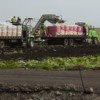 Lettuce is an economically important winter vegetable crop in Florida, with approximately 11,000 acres in production and a farm gate value of $40–$50 million annually. Florida lettuce production occurs mainly in the Everglades Agricultural Area (EAA). In recent years, research scientists at the University of Florida conducted variety trials that included the major cultivars of romaine and iceberg types. These trials were conducted on organic soil in the Everglades Agricultural Area and the IFAS-recommended practice was followed. This 3-page fact sheet describes lettuce cultivars suitable for production on organic soils in the EAA of southern Florida. Written by Huangjun Lu, and published by the UF Department of Horticultural Sciences, October 2013.
Lettuce is an economically important winter vegetable crop in Florida, with approximately 11,000 acres in production and a farm gate value of $40–$50 million annually. Florida lettuce production occurs mainly in the Everglades Agricultural Area (EAA). In recent years, research scientists at the University of Florida conducted variety trials that included the major cultivars of romaine and iceberg types. These trials were conducted on organic soil in the Everglades Agricultural Area and the IFAS-recommended practice was followed. This 3-page fact sheet describes lettuce cultivars suitable for production on organic soils in the EAA of southern Florida. Written by Huangjun Lu, and published by the UF Department of Horticultural Sciences, October 2013.
http://edis.ifas.ufl.edu/hs1225
Weeds and Epidemiology of Bacterial Leaf Spot of Lettuce in the Everglades Agricultural Area (SSAGR347/AG357)
This 2-page fact sheet briefly covers the history, symptoms, and epidemiology of this disease of lettuce. Written by D.C. Odero, and published by the UF Department of Agronomy, May 2011.
http://edis.ifas.ufl.edu/ag357
SL323/SS535 Spring Mix: An Emerging Crop for Florida
SL323, a 3-page illustrated fact sheet by Santiago Rosaro, Alan L. Wright, David D. Sui, Nikol Havranek, and Yigang Luo, describes the components of spring mix, explains the reasons why consumers are looking for these mixes, and why growers in the Everglades Agricultural Area of Florida are producing them. Published by the UF Department of Soil and Water Science, June 2010.
http://edis.ifas.ufl.edu/ss535
SL287/SS500 Soil pH Effects on Nutrient Availability in the Everglades Agricultural Area
SL287, a 5-page fact sheet by Alan L. Wright, Edward A. Hanlon, David Sui, and Ronald Rice, identifies strategies that could be used to address the problem of the increasing pH in muck soils. Includes references. Published by the UF Department of Soil and Water Science, May 2009.
http://edis.ifas.ufl.edu/SS500

